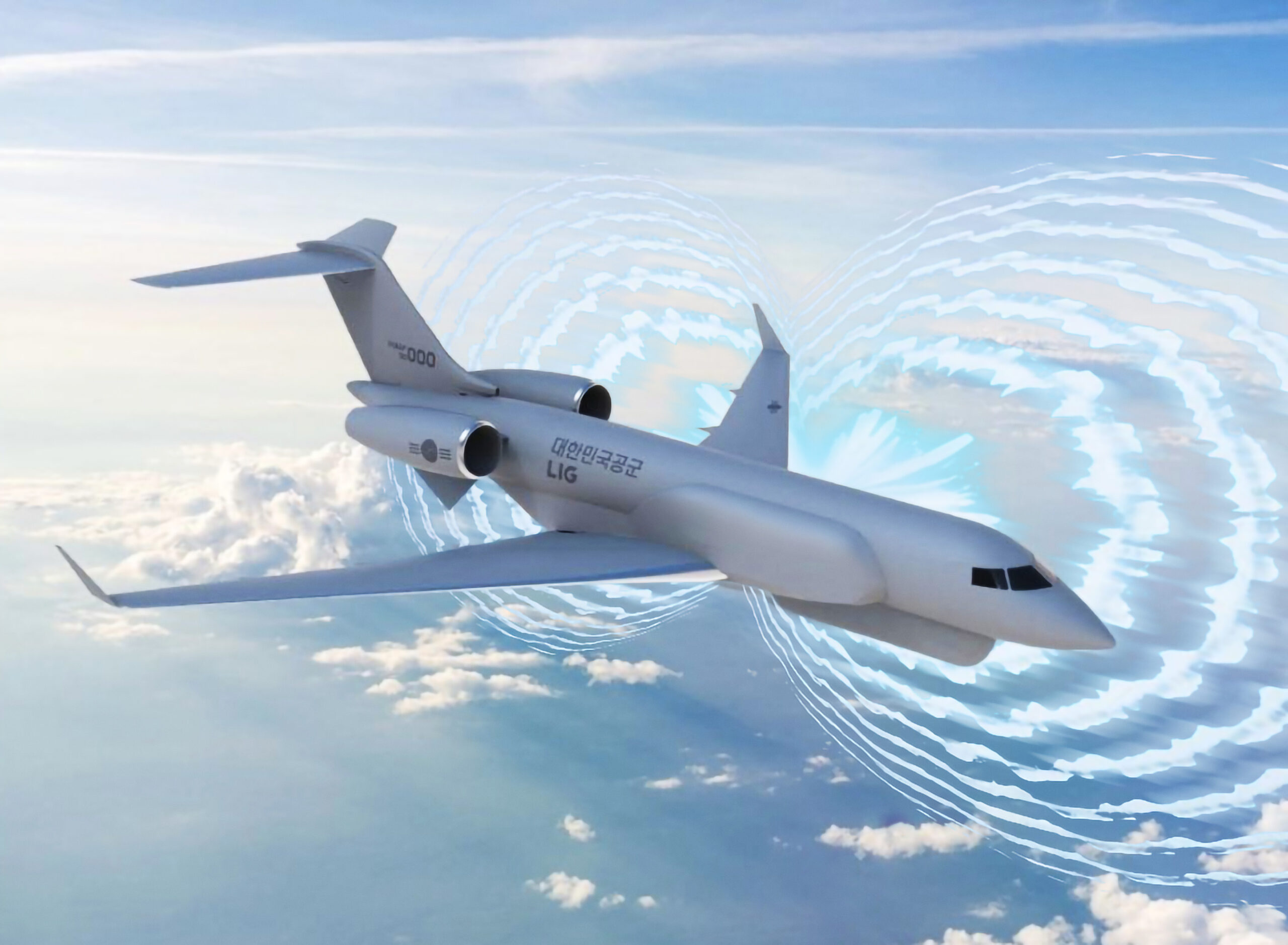South Korea’s armed forces have modernized at impressive speed, from fifth-generation fighters to advanced missile defense and a growing blue-water navy. Yet one critical vulnerability remains: control of the electromagnetic spectrum. Intelligence, surveillance, navigation, command-and-control, precision weapons, and unmanned systems all depend on invisible radiofrequency rails. When those rails are contested, forces lose their eyes, ears, and nerves.
That is why leading air forces have normalized stand-off electronic attack aircraft and embraced electromagnetic spectrum operations (EMSO)—the doctrinal umbrella that fuses electronic attack, electronic protection, and electronic support with spectrum management and multi-domain planning. In gray zones and in war, electronic warfare delivers outsize effects at relatively low cost: jamming and spoofing remain largely invisible until networks misread, shut down, or wander off course. On the Korean Peninsula, this is not a thought experiment. Pyongyang has repeatedly interfered with GPS over wide areas, while expanding air defenses, drones, and dedicated EW units. As swarms and attritable platforms proliferate in the 2030s, the side that protects its links and navigation—while degrading the adversary’s—will set the tempo.
Table of Contents
ToggleWhat EW Aircraft Change Against North Korea
A dedicated stand-off electronic warfare (EW) aircraft would give South Korea a tool it has never really had before: the ability to shape the entire electromagnetic environment from a safe distance. In practice, that means several things.
First, it can take the edge off North Korea’s GPS jamming and spoofing. By detecting and locating hostile signals, an EW aircraft can suppress them and help allied forces keep navigation reliable through anti-jam antennas and backup methods.
Second, it can defend the networks that hold modern operations together. By mapping North Korea’s command-and-control emitters and applying countermeasures in real time, an EW aircraft helps keep vital links such as Link-16 and satellite communications alive just when combined strike packages need them most.
Third, it is a powerful enabler for suppressing enemy air defenses (SEAD). A stand-off jammer can blind and confuse North Korean radar operators, opening corridors for strike aircraft and feeding valuable electronic intelligence into the targeting cycle.
Fourth, it offers a cost-effective way to deal with drones. Instead of firing expensive missiles at swarms of small UAVs, EW aircraft can jam their control links or mislead their navigation, conserving interceptors for the targets that truly require them.
Finally, as North Korea leans more on space-based support and potentially Russian-informed interference techniques, airborne EW nodes can act as the bridge between ground forces and satellites. They can keep friendly communications and intelligence flowing even under heavy electronic attack, while denying Pyongyang the same advantage.
The Present Constraint—and Why It Matters
Korea’s most pressing gap is the lack of a dedicated stand-off electronic warfare aircraft. Today, the Air Force relies mainly on self-protection pods mounted on fighters, while depending on allied (US) aircraft for broader effects. The shortfall is compounded by two structural weaknesses. First, theater-level spectrum operations remain underdeveloped: Seoul still lacks a permanent, instrumented range for jamming and anti-jamming training, complete scenario libraries, and rigorous methods to measure effects. Second, the services are in mid-transition. The Navy is only now moving from older shipboard systems to modern suites, while the Army and joint force are scaling up soft-kill counter-drone tools that still need greater depth, standardization, and integration. Finally, navigation resilience is still incomplete until the Korea Positioning System (KPS) becomes available in the mid-2030s.
The 2034 Pivot: From Self-Protection to Theater Shaping
Seoul’s plan to field four dedicated electronic warfare (EW) aircraft by 2034 marks a decisive pivot—from piecemeal, platform-level self-protection to theater-wide spectrum operations. Properly integrated, these aircraft would serve several critical roles. They could open the fight for KF-21 and F-35A strike packages by degrading enemy radars and communications. They could also act as airborne spectrum intelligence hubs, fusing data from air, sea, land, and space sensors into a real-time electromagnetic picture. Finally, they would anchor a joint architecture, linking next-generation naval EW systems such as the FFX Batch-IV and KDDX with soft-kill counter-drone units on the ground.
Strategically, the program aligns with the mandate of South Korea’s Strategic Command, which is charged with integrating long-range strike, missile defense, and cross-domain effects. If a Space Strategy Command is established, these aircraft would become the connective tissue between space and surface operations—protecting satellite communications and navigation, exploiting space-based intelligence, and denying Pyongyang comparable advantages. The politics of any future administration matter less than the physics: without stand-off EW, Korea’s advanced air and missile forces will remain vulnerable; with it, their deterrent credibility and wartime survivability rise sharply.
From Program to Posture: Building a 2035-Ready Spectrum Force
By the early 2030s, South Korea will face a more complex spectrum fight: North Korea’s jammers and deception systems will grow more sophisticated, potentially aided by Russian technology transfers; drone swarms and attritable aircraft will become denser, demanding resilient links and assured navigation; and longer-range precision fires and autonomous kill-webs will proliferate, all of them brittle without spectrum control. Against this backdrop, four dedicated EW aircraft must be treated not as a final capability but as a minimum entry force, a bridge to a larger fleet and a platform for incremental upgrades.
South Korea’s decision to acquire these four aircraft by 2034 is therefore only the beginning. The true challenge is to ensure the program becomes the backbone of a broader EMSO posture, not a narrow procurement effort. That means treating the fleet not as an endpoint, but as the starting line of a decade-long transformation.
First, Seoul must acknowledge that four aircraft represent a floor, not a ceiling. A credible regional deterrent will likely require six to eight platforms, supported by a clear Block-II roadmap that expands power, frequency coverage, and software-defined mission systems. If the aircraft remain static, they will age quickly against adaptive threats; if they spiral, they can evolve alongside adversary jammers, radars, and networks.
Equally important is how these aircraft are used. They should not be seen as niche tools but as the core enablers of strike packages. An EW-led playbook—pairing the new aircraft with KF-21 and F-35A fighters, stand-in decoys, and long-range precision fires—should become muscle memory across the Air Force and Strategic Command. The first hours of conflict will be unforgiving; only rehearsed, integrated packages can guarantee that strike aircraft reach their targets intact.
Institutional changes must follow. Seoul needs a permanent, instrumented range for live jamming and anti-jamming training, coupled with a joint “common operating picture” of the electromagnetic environment shared by Strategic Command, the services, and allies. Without such infrastructure, tactics will remain anecdotal rather than data-driven, and lessons will lag the pace of threat evolution.
The new aircraft should also knit together air and sea. Their emitter libraries and mission data must be linked to the Navy’s forthcoming EW Equipment for Ship-II suites aboard FFX Batch-IV frigates. If shipboard soft-kill defenses can cue to airborne jamming and deception, adversaries will face layered dilemmas that no single countermeasure can solve.
Resilient navigation must be addressed in parallel. Korea’s planned KPS constellation will not be operational until the mid-2030s. In the meantime, forces need anti-jam antennas, multi-GNSS fused with inertial or terrestrial backups, and real-time integrity monitors to flag spoofing attempts. In crisis, the new EW aircraft could serve as the triage hub for PNT integrity, safeguarding both military and civilian navigation in contested skies.
Another priority is the drone threat. North Korea’s expanding UAV arsenal demands a scalable counter-UAS architecture. Standardizing soft-kill denial and deception at air bases, ground units, and major naval platforms—and orchestrating them through airborne EW nodes—will make counter-drone defenses deeper and more flexible than relying on costly interceptors alone.
Finally, South Korea must recognize that data is as decisive as hardware. A systematic effort to collect, process, and exploit North Korean and Russian-heritage waveforms will allow rapid updates to jamming and deception techniques. Artificial intelligence and machine learning can compress this cycle from quarterly to daily, ensuring every aircraft, ship, and ground system adapts at operational speed.
Adopting open-architecture mission systems and allied-standard interfaces will reinforce this process. Not only will it shorten upgrade timelines and smooth combined operations with the United States and Japan, but it could also seed exportable families of EW systems—pods, payloads, decoys, and UAV kits—that position South Korea as a global supplier of electronic warfare, just as it has become in artillery and armor.
The Payoff
Fielding four EW aircraft by 2034 will not solve every spectrum problem. It will, however, close Korea’s most consequential gap and unlock a truly joint EMSO posture. Done right, the program transforms airpower from a consumer of spectrum to a manager of it—protecting friendly kill-chains, blinding and confusing the adversary’s, and stitching space, air, sea, and land into one resilient web. Deterrence improves when the other side doubts its sensors, links, and navigation. In the decade ahead, a credible Korean EW force—air-led, sea-reinforced, jointly trained—can impose exactly that doubt on Pyongyang.

Dr. Ju Hyung Kim
Dr. Ju Hyung Kim serves as President of the Security Management Institute, a defense-focused think tank affiliated with South Korea’s National Assembly. He has contributed to numerous defense initiatives and has advised key institutions, including the Republic of Korea Joint Chiefs of Staff.
- Dr. Ju Hyung Kim













